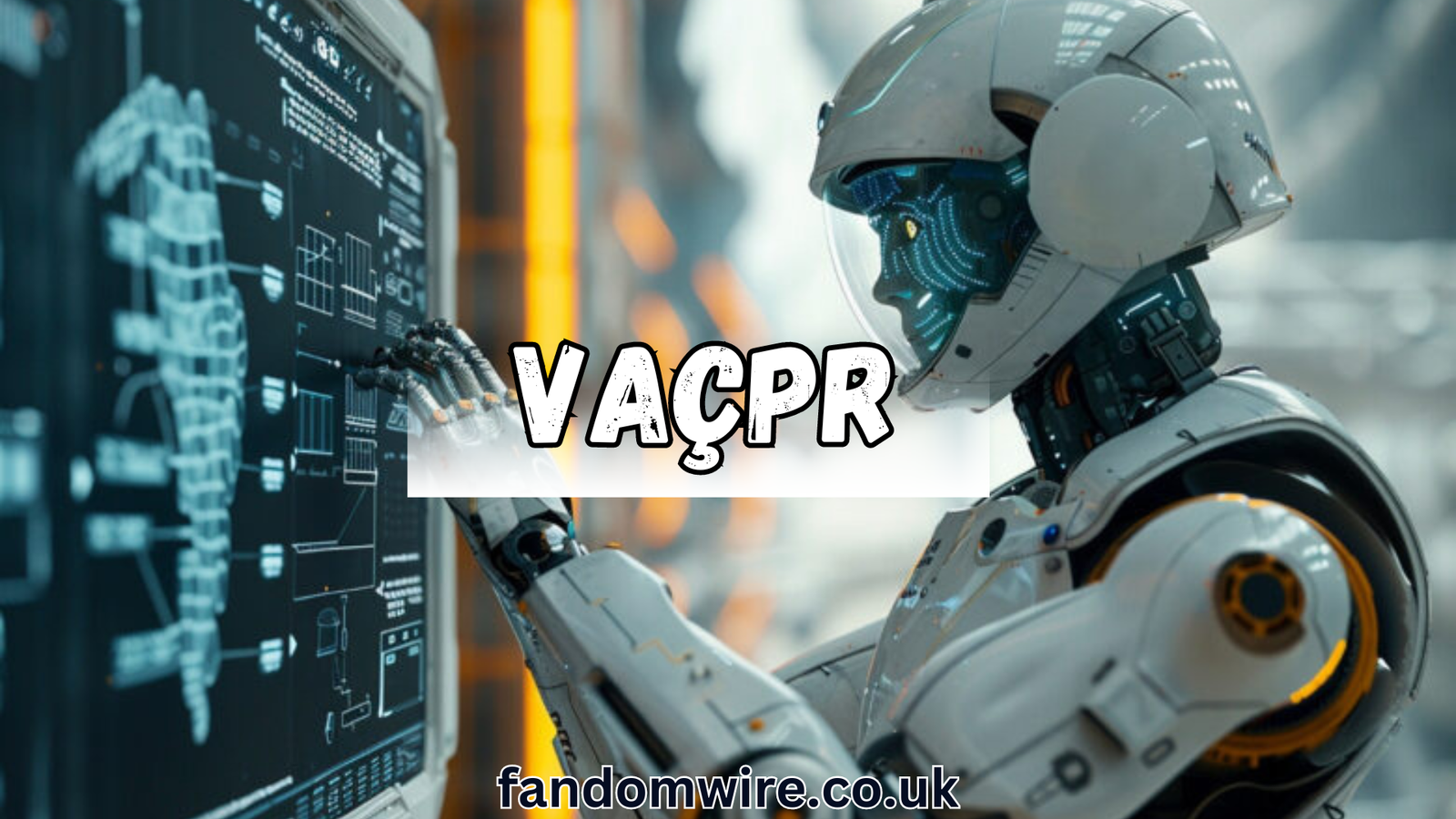Vaçpr, a revolutionary technology poised to transform industries, holds immense promise in various fields. Let’s talk about its intricacies and explore its potential applications.
Understanding Vaçpr
Vaçpr, short for Variable Compression and Pressure, is a cutting-edge technology designed to manipulate pressure and compression levels dynamically. It utilizes advanced algorithms and precision engineering to achieve unparalleled control and efficiency.
Why Vaçpr Matters
In today’s rapidly evolving world, where efficiency and precision are paramount, Vaçpr offers a game-changing solution. Its ability to adapt pressure and compression levels in real-time opens up a myriad of possibilities across diverse industries.
The History of Vaçpr
Origins of Vaçpr
The concept of Vaç pr traces back to the early 21st century when researchers began exploring the potential of variable pressure technologies. Over the years, advancements in materials science and engineering paved the way for the development of Vaç pr as we know it today.
Evolution of Vaçpr Technology
From its humble beginnings as a theoretical concept to its current state-of-the-art applications, Vaçpr has undergone a remarkable evolution. Continuous research and development have refined its capabilities, making it a cornerstone of modern technological innovation.
The Science Behind Vaçpr
How Vaçpr Works
At its core, Vaç pr operates on the principle of dynamic pressure modulation. By adjusting compression levels based on real-time data feedback, it optimizes performance and enhances efficiency across various applications.
Vaçpr Mechanisms
Vaç pr employs sophisticated mechanisms such as pneumatic actuators and servo systems to precisely control pressure levels. This intricate interplay of components ensures seamless operation and unparalleled accuracy.
Benefits of Vaçpr
The benefits of Vaç pr are manifold, ranging from increased productivity to enhanced safety. Its ability to adapt to changing conditions enables seamless integration into diverse environments, making it a versatile solution for numerous industries.
Applications of Vaçpr
Medical Applications
Vaç pr holds tremendous potential in the field of medicine, revolutionizing surgical procedures and rehabilitation processes.
Vaçpr in Surgery
In surgical settings, Vaç pr’s precise pressure control facilitates delicate procedures, minimizing tissue damage and accelerating recovery times. Surgeons can now perform intricate maneuvers with unprecedented accuracy, leading to better patient outcomes.
Vaçpr in Rehabilitation
In rehabilitation, Vaçpr aids in muscle recovery and rehabilitation efforts by providing targeted pressure therapy. Its customizable settings cater to individual patient needs, ensuring optimal treatment outcomes.
Industrial Applications
Vaç pr’s versatility extends beyond the medical field, finding applications in various industrial sectors.
Vaçpr in Manufacturing
In manufacturing, Vaç pr streamlines production processes by optimizing pressure conditions for different materials and applications. Its adaptability and efficiency translate into cost savings and improved product quality.
Vaçpr in Automation
In automation, Vaç pr enhances precision and reliability, enabling seamless integration into robotic systems. Its ability to adjust pressure levels on the fly ensures smooth operation in dynamic environments, paving the way for more efficient industrial automation solutions.
Vaçpr in the Modern World
Vaçpr in the Healthcare Industry
In the healthcare industry, Vaç pr is revolutionizing patient care and treatment methodologies. From surgical suites to rehabilitation centers, its impact is felt across the entire healthcare ecosystem, improving outcomes and enhancing quality of life.
Vaçpr in Robotics
In robotics, Vaç pr is driving innovation by providing robots with unprecedented dexterity and flexibility. From delicate manipulation tasks to robust industrial applications, its dynamic pressure control capabilities unlock new possibilities for robotic systems.
Challenges and Future Directions
Overcoming Obstacles
Despite its immense potential, Vaç pr faces challenges such as regulatory hurdles and technological limitations. However, ongoing research and development efforts are addressing these obstacles, paving the way for broader adoption and integration into mainstream applications.
Future Innovations in Vaçpr Technology
Looking ahead, the future of Vaç pr is bright, with continued advancements expected to further enhance its capabilities. From miniaturization to enhanced sensing technologies, the possibilities are endless, promising a future where Vaçpr plays an increasingly integral role in shaping our world.
Vaçpr in the Healthcare Industry
In the healthcare sector, Vaçpr is proving to be a game-changer, transforming the way medical procedures are performed and patients are treated. Its precision and adaptability make it invaluable in surgical settings, where even the slightest variation in pressure can have significant implications. Surgeons rely on Vaç pr to optimize pressure conditions during delicate procedures, minimizing tissue trauma and accelerating healing.
Moreover, Vaç pr is making strides in rehabilitation by providing targeted pressure therapy to aid in muscle recovery and improve mobility. Whether it’s post-operative care or rehabilitation following an injury, Vaç pr’s customizable settings allow healthcare professionals to tailor treatment plans to meet individual patient needs, resulting in better outcomes and faster recovery times.
Vaçpr in Robotics
In the realm of robotics, Vaç pr is pushing the boundaries of what’s possible, empowering robots with unprecedented dexterity and flexibility. Traditional robotic systems often struggle with tasks requiring fine motor skills or delicate manipulation. However, with Vaç pr’s dynamic pressure control capabilities, robots can perform intricate tasks with unparalleled precision and efficiency.
From assembly lines to surgical robots, Vaç pr enhances robotic capabilities across various applications. Its ability to adjust pressure levels in real-time enables robots to adapt to changing environments and perform tasks with greater accuracy. As a result, industries are experiencing improved productivity, reduced errors, and increased safety in robotic operations.
Challenges and Future Directions
While Vaçpr holds immense promise, it’s not without its challenges. Regulatory considerations, technological limitations, and market acceptance are among the hurdles that need to be overcome for broader adoption. However, ongoing research and development efforts are addressing these challenges, paving the way for a future where Va çpr plays an even more significant role in shaping our world.
Looking ahead, the future of Vaç pr is bright, with continued advancements expected to further enhance its capabilities. Miniaturization, enhanced sensing technologies, and greater integration with emerging technologies such as artificial intelligence are just a few areas where Vaç pr is poised to make significant strides. As these innovations unfold, Va çpr will continue to revolutionize industries and drive innovation in the years to come.
Conclusion
In conclusion, Vaçpr stands at the forefront of pressure modulation technology, offering unprecedented control, versatility, and efficiency. From healthcare to manufacturing to robotics, its applications are vast and its potential, limitless. As we continue to unlock the full capabilities of Vaçpr, we’re poised to usher in a new era of innovation and advancement across industries. So, let’s embrace the power of Vaçpr and embrace the possibilities it brings to the table.
Read Also: Kääbntäjä
FAQs
How does Vaçpr differ from traditional pressure modulation technologies?
Vaç pr distinguishes itself through its dynamic pressure control capabilities, allowing for real-time adjustments tailored to specific needs or conditions, unlike static pressure systems.
What are some examples of Vaçpr’s applications in the healthcare industry?
Vaç pr finds extensive use in surgeries for precise tissue manipulation and reduced trauma, as well as in rehabilitation for targeted pressure therapy to aid in muscle recovery and mobility enhancement.
In what ways does Vaçpr enhance robotic systems?
Vaçpr significantly improves robotic dexterity and adaptability, enabling robots to perform intricate tasks with precision and efficiency across various industries, from manufacturing to healthcare.
What challenges does Va çpr face in broader adoption, and how are they being addressed?
Regulatory hurdles, technological limitations, and market acceptance pose challenges, but ongoing research and development efforts aim to overcome these obstacles and facilitate wider integration of Va çpr technologies.
What can we expect from the future of Vaç pr technology?
Future innovations in Vaçpr may include advancements in miniaturization, enhanced sensor technologies, and deeper integration with emerging technologies like artificial intelligence, paving the way for even more transformative applications across industries.





